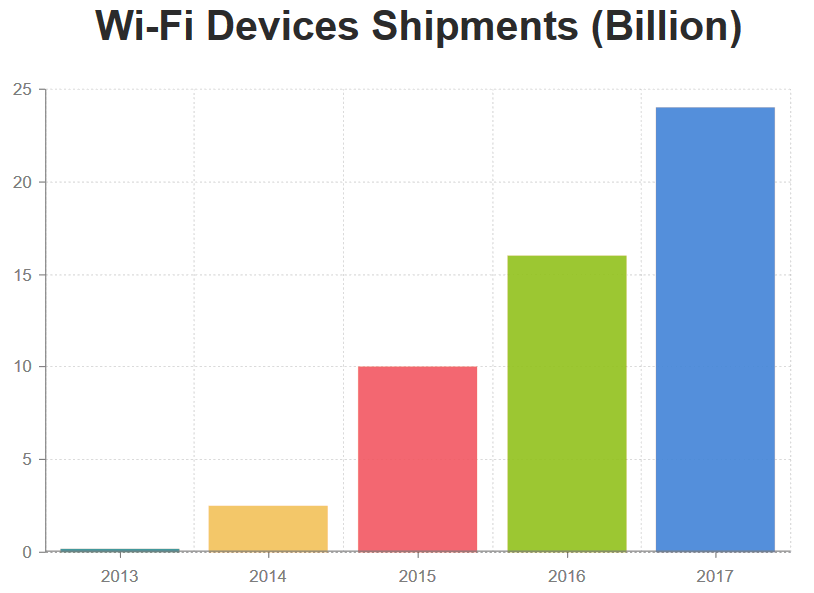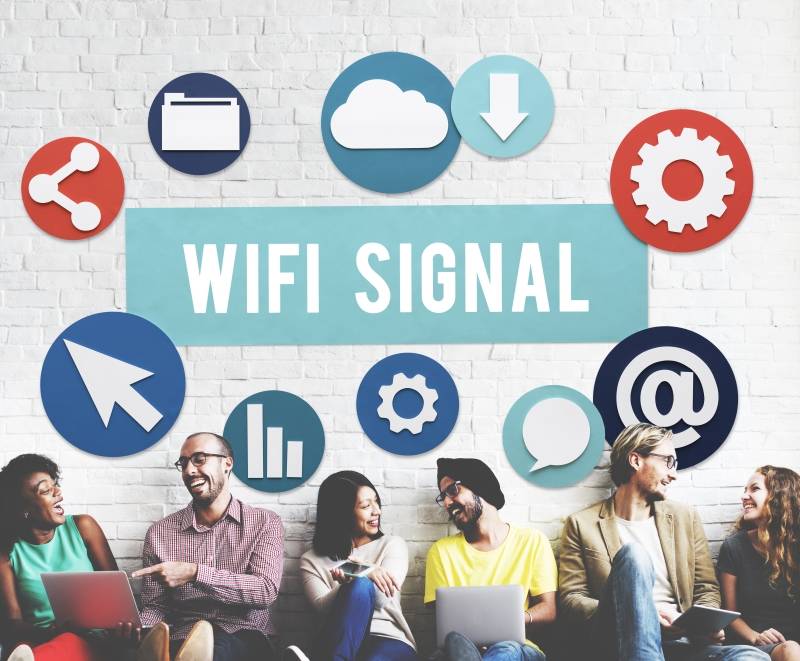Contact Us --- Phone:650-543-8004 --- Email: news@pointbandbeyond.com --- All Rights reserved.
Wi-Fi technologies and their drawbacks
Wi-Fi is everywhere, starting with your smartphone and ending with the Internet of Things devices that water your plants
whenever they are thirsty. Researchers from Data Alliance estimate that close to 25 billion of wireless devices will be sold this
year. Here's how these numbers have grown during the last few years.


Welcome to our blog!
It's the place where we discuss the latest technology trends. If you can't find what you are looking for, we may already have a white
paper that discusses that particular topic, and we can email it to you. Simply contact us and we'll send you the download link.


But how did Wi-Fi come to life in the first place? Back in 1985, the Federal Communications Commission (FCC) decided to do
something amazing: it allowed regular people like you and me to use three different frequency bands for free, without needing a
government-issued license.
These were the 900 MHz band, which is still used today for cordless phones, the 2.4 GHz band, which continues to be the most
used Wi-Fi band in history, and the 5.8 GHz band, which is often times used for balloon to balloon and balloon to ground
communications.
This has allowed hardware manufacturers to create wireless devices using the first standard - 802.11b. However, its
specifications were too complex, being included in a document that contained over 400 pages. This explains why several big
companies such as Intel, Nokia, 3Com, etc. have created an alliance, which has managed to promote the simplified "Wi-Fi"
standard and technology name.
Since then, wireless data transfer speeds have constantly increased. While the first Wi-Fi standard allowed devices to operate at
speeds of up to 11 Mbps, the latest 802.11ac standard can help wireless clients exchange data at speeds that can reach 7000 Mbps
- a huge 64,000% increase!
Real-life tests paint a slightly different picture, though. Due to signal interference, which leads to data packet loss, the actual
speed that can be achieved is around the 2000 Mbps mark. Still, it's an impressive number, because it allows people to download a
1 GB file in less than 5 seconds!
So, who needs cables, when Wi-Fi speeds are that good? Lots of companies and people, it seems. And there's an objective reason
for this: several important factors limit wireless connections speeds and increase latency.
I have already mentioned signal interference. That is a key factor indeed, but there are several more. Take physical obstructions,
which limit signal strength, for example. Walls that separate the router and its clients can turn a strong Wi-Fi signal into one
that's barely receivable. And when signal quality degrades, the router and/or the clients must resend the data packets over and
over, until they are correctly decoded.
As mentioned above, people purchase, install and use all sorts of wireless clients. Sure, everyone knows that smartphones, tablets
and laptops can use precious wireless resources. But often times we forget about Wi-Fi repeaters, IoT devices, smart watches,
smart TVs, gaming consoles, and yes! - even friends that come to our house, bringing their Wi-Fi-hungry devices with them.

Network hardware is limited, so often times it can't keep up with the increased number of clients. As you add more and more
devices to the network, its speed is constantly decreasing.
To make the things even more complex, your Wi-Fi network may be slowed down (a lot!) by your old wireless devices. Wi-Fi
standards have been drafted with the goal of offering maximum compatibility between devices, and the system works great.
There's a big problem with it, though; when a client operates using an older wireless standard, the router decreases its speed
(switches to the older standard) to make communication with that client possible.
Of course, you can always set the router to the newest standard, but this means that some of the clients may not be able to
connect to the network.
Wi-Fi security is also an issue. It's quite strange that device manufacturers strive to squeeze the fastest data transfer speeds out
of their devices, but don't invest any money into technologies that have the potential to make their products hacker-proof.
The best security protocol we can use is WPA2 - that's for sure. And when this protocol is used in conjunction with the AES
encryption algorithm, it's good enough for most people's needs. However, since renting a computer farm is inexpensive these
days, the bad guys can break into pretty much any Wi-Fi network they want within hours.
It may not be perfect, but Wi-Fi is here to stay, and it's already making our lives better. Let's hope that signal propagation and
data security will significantly improve in the near future.